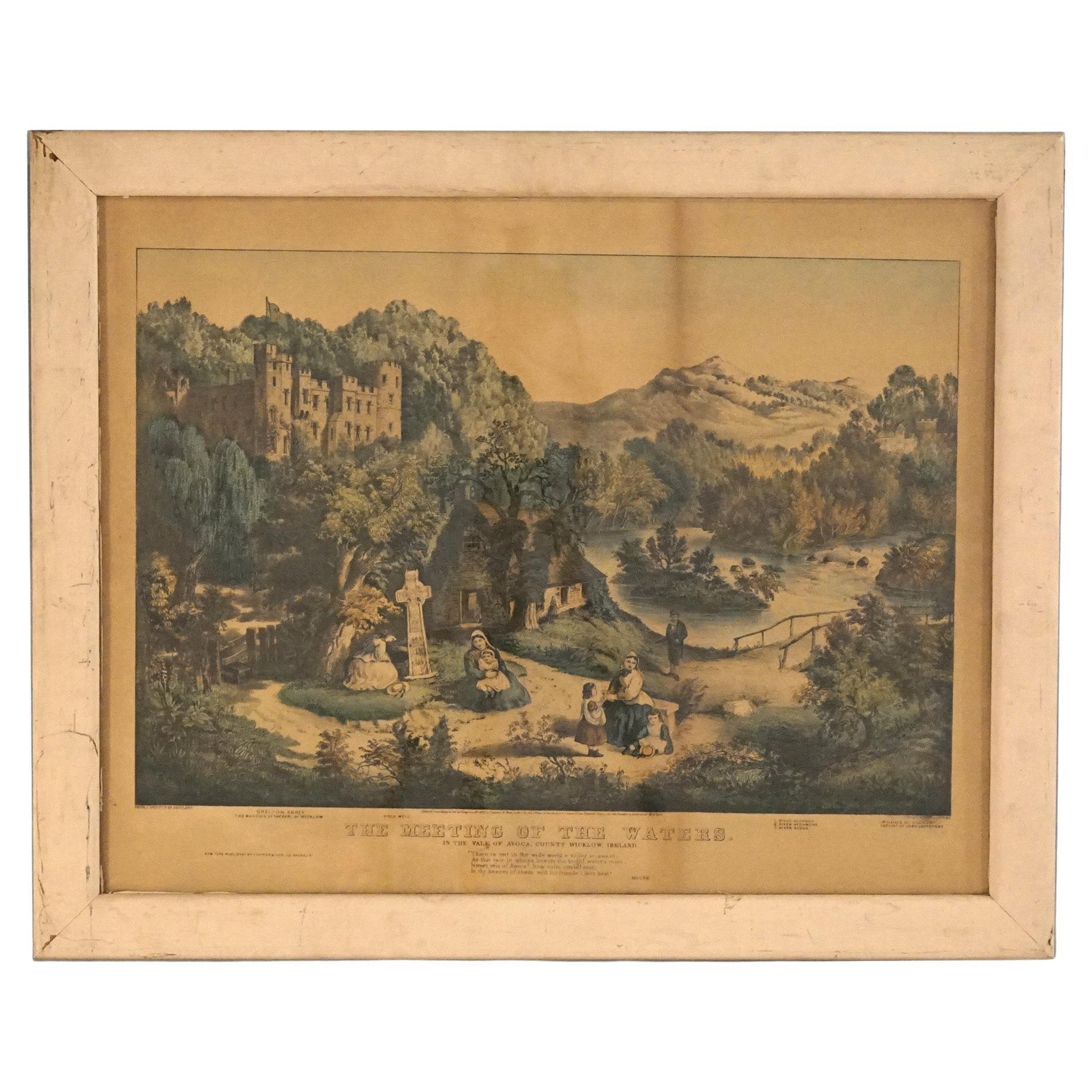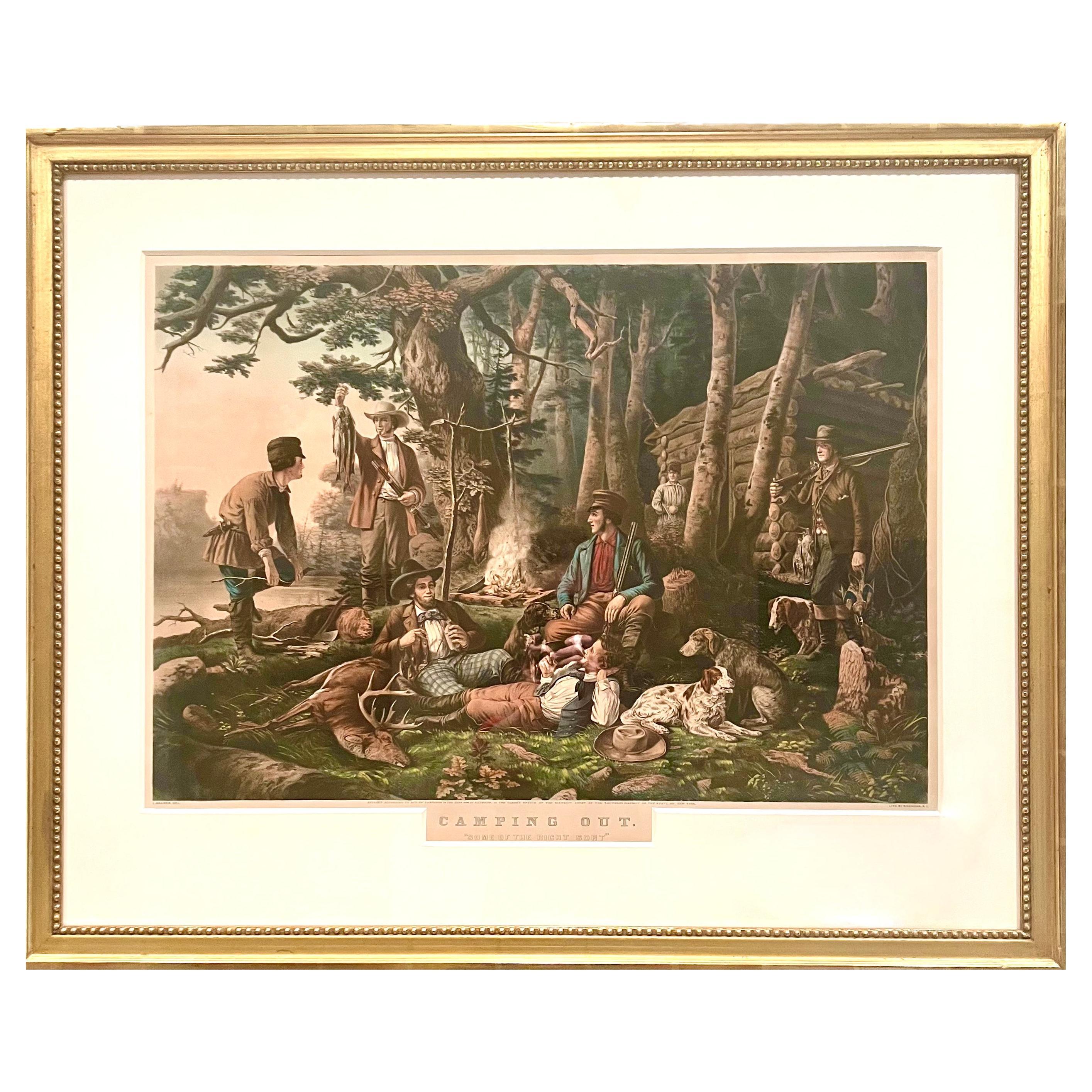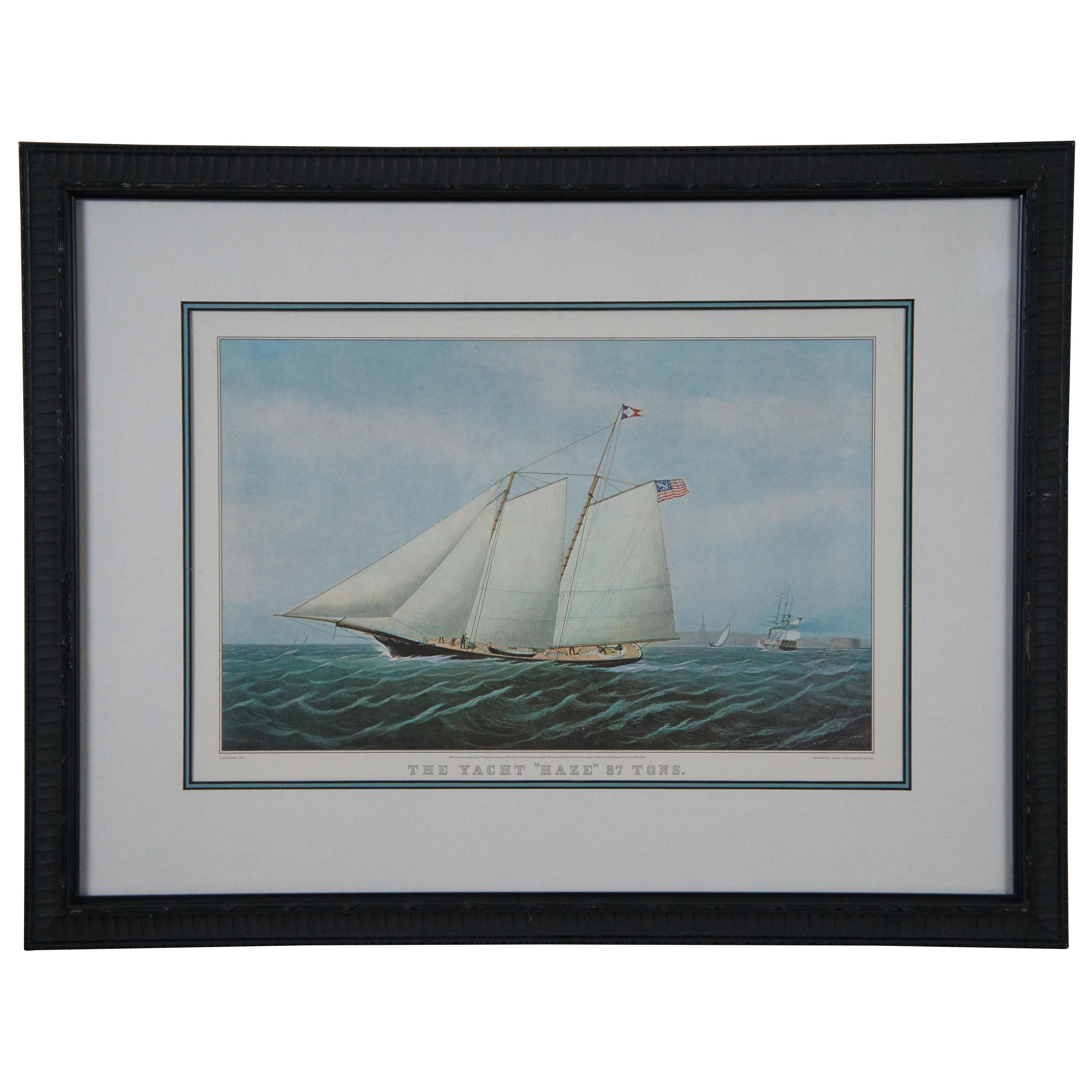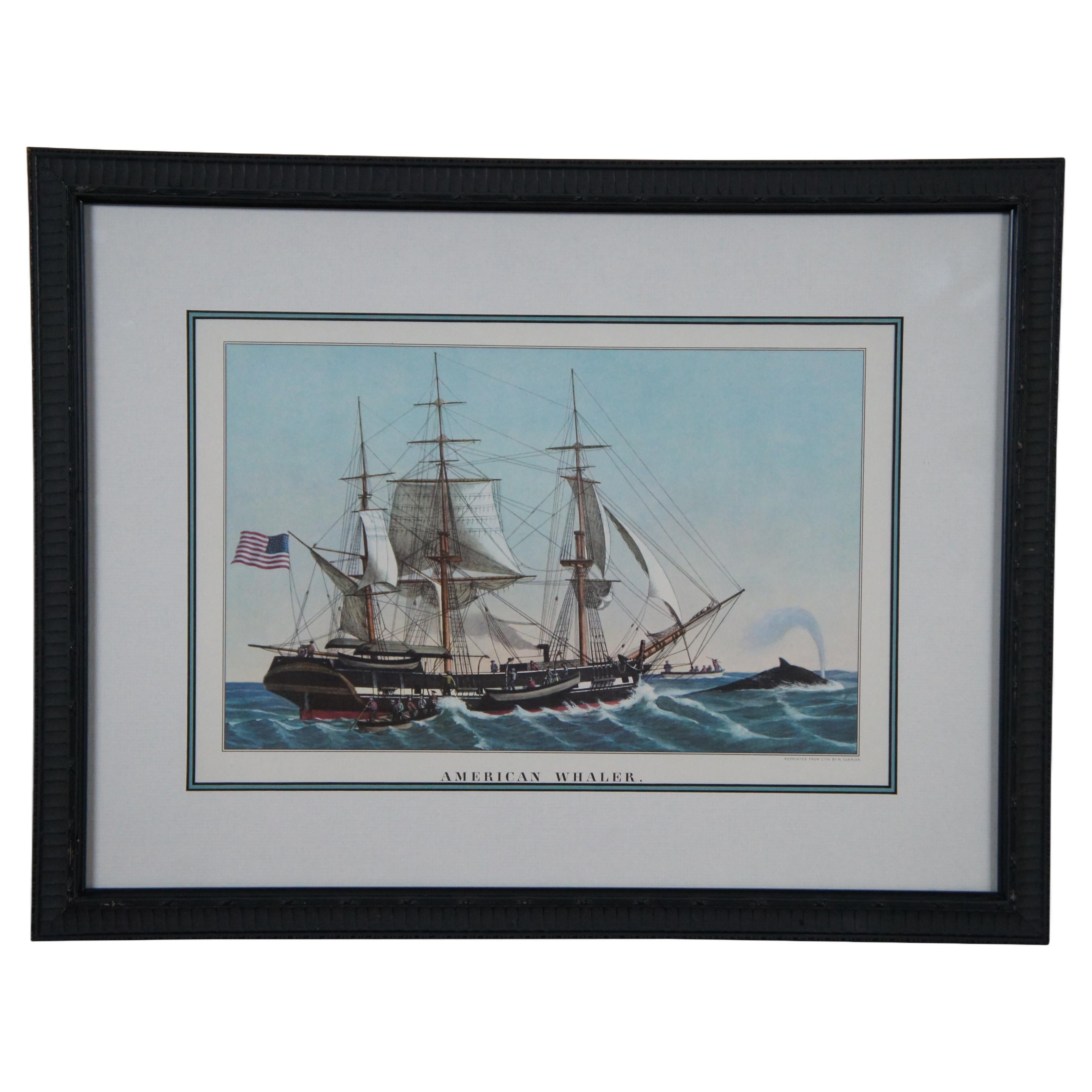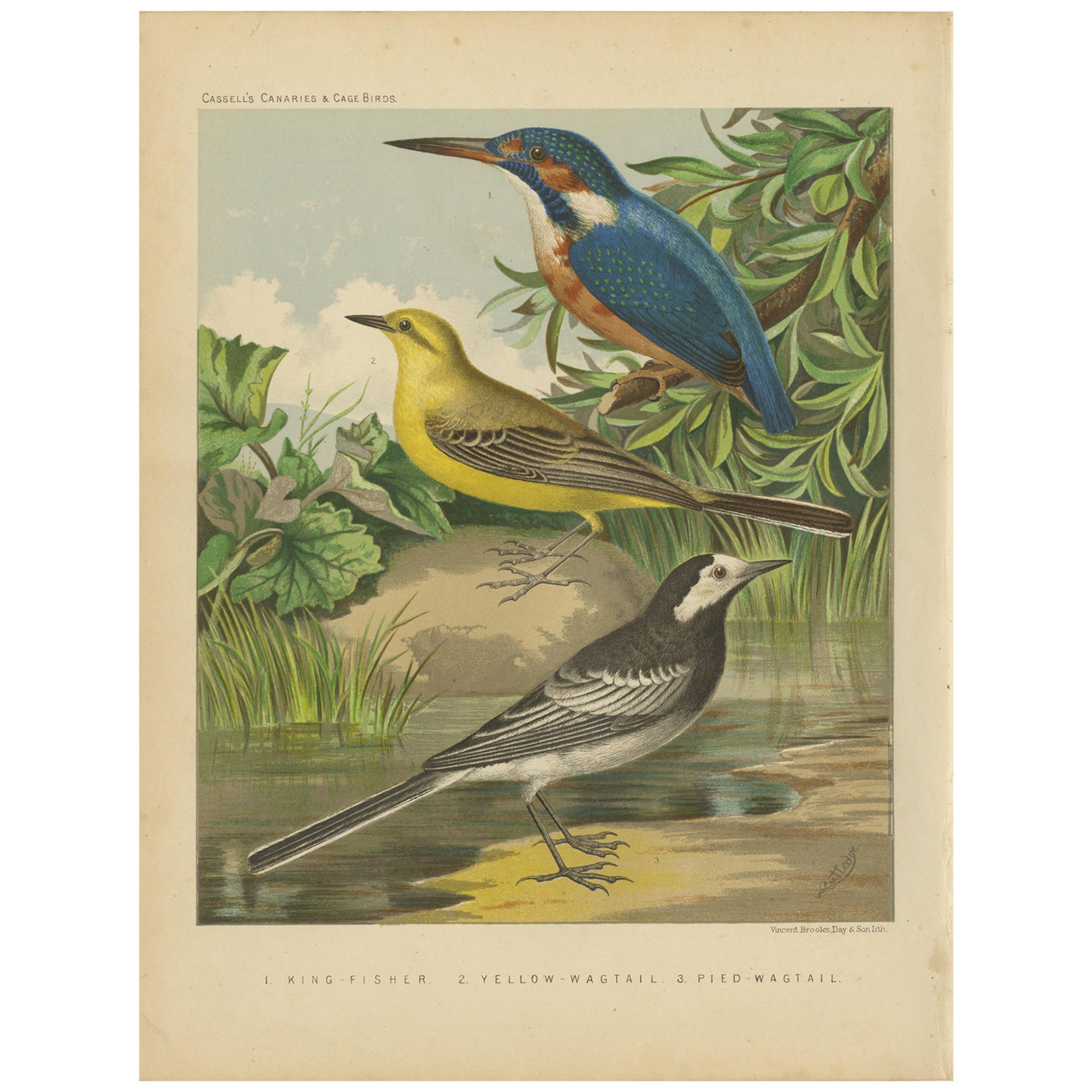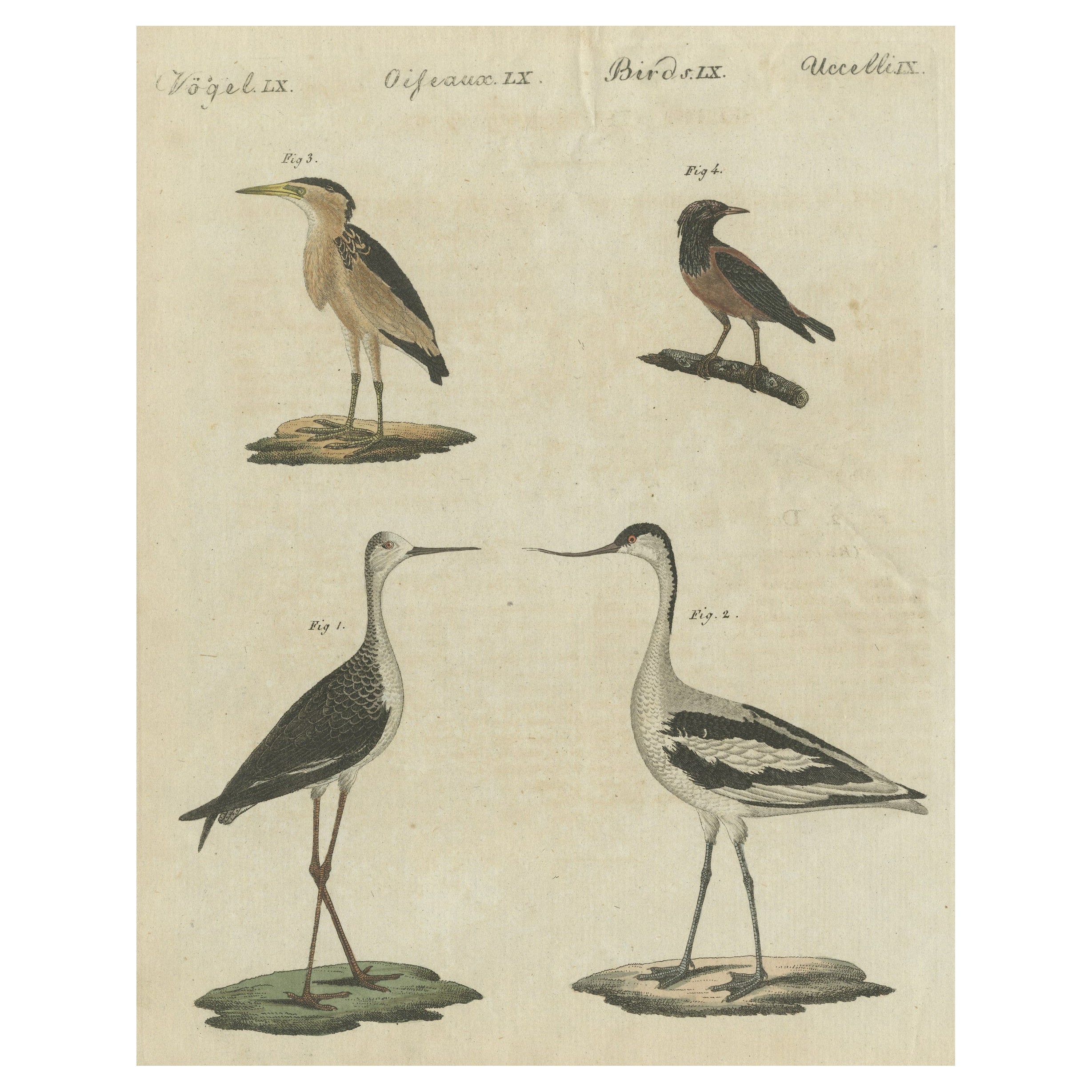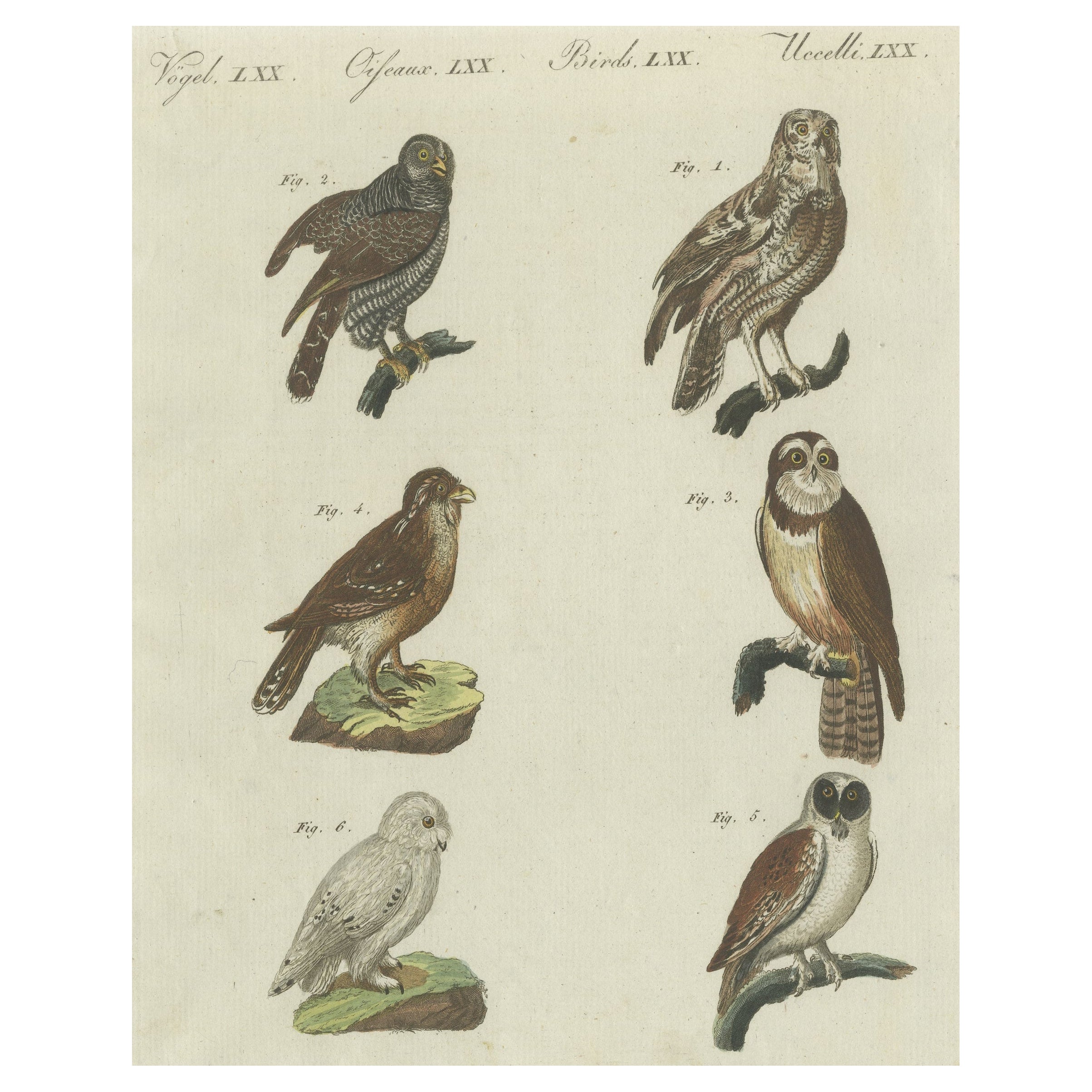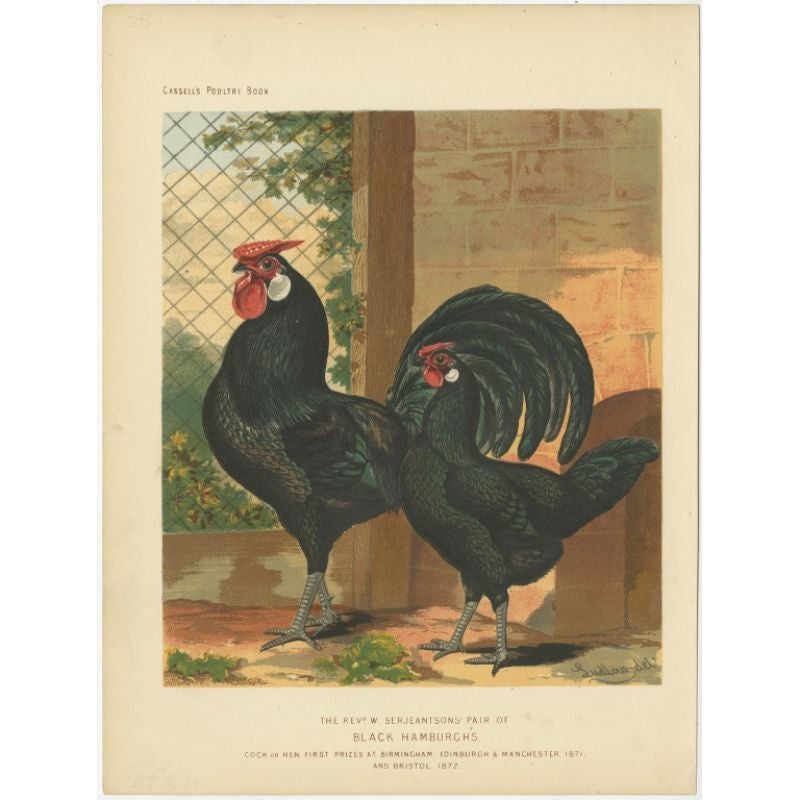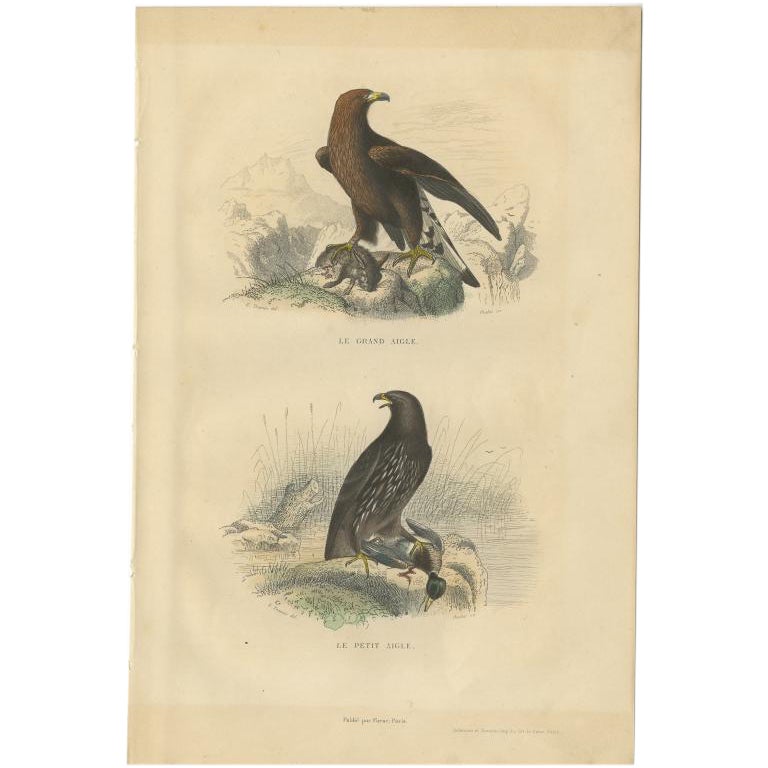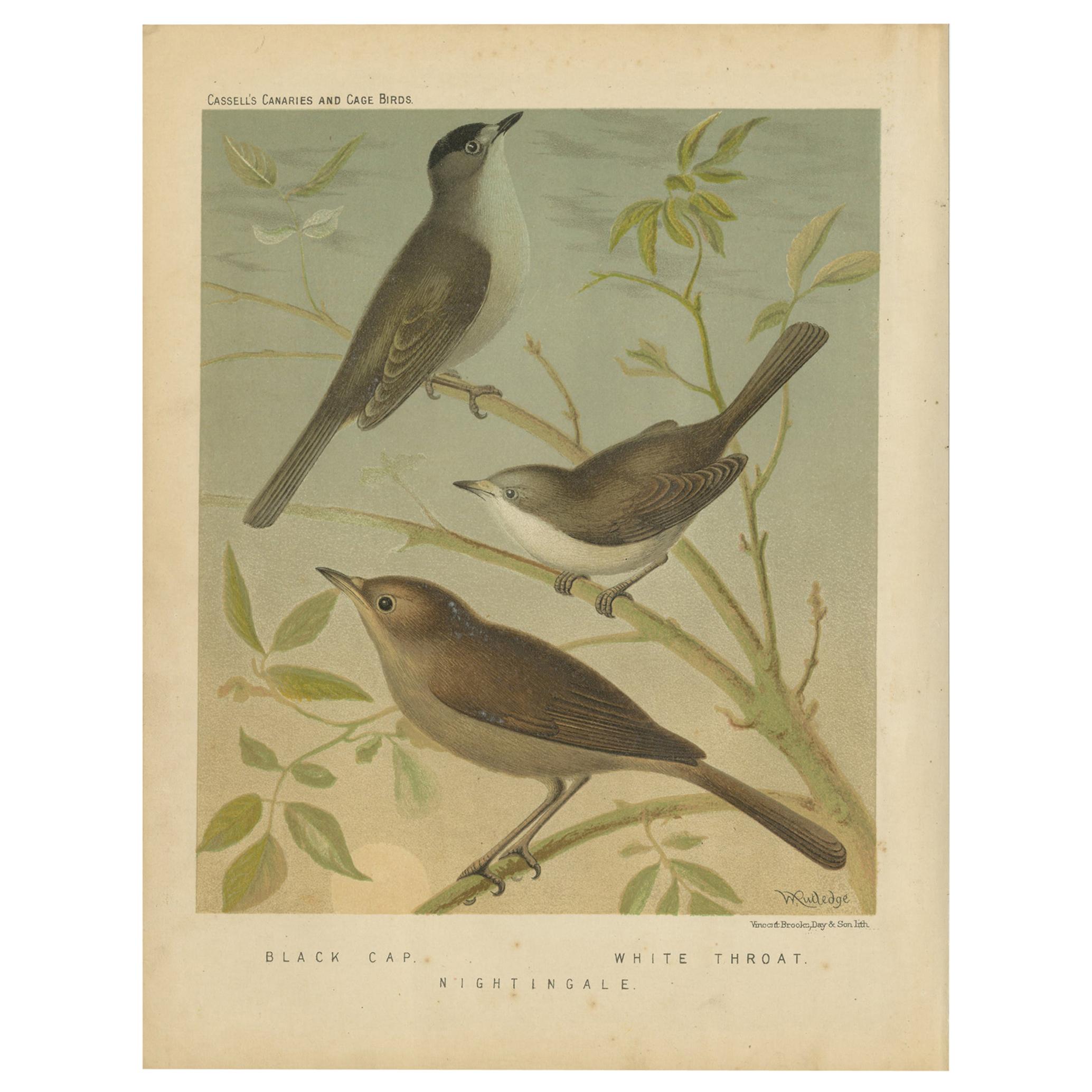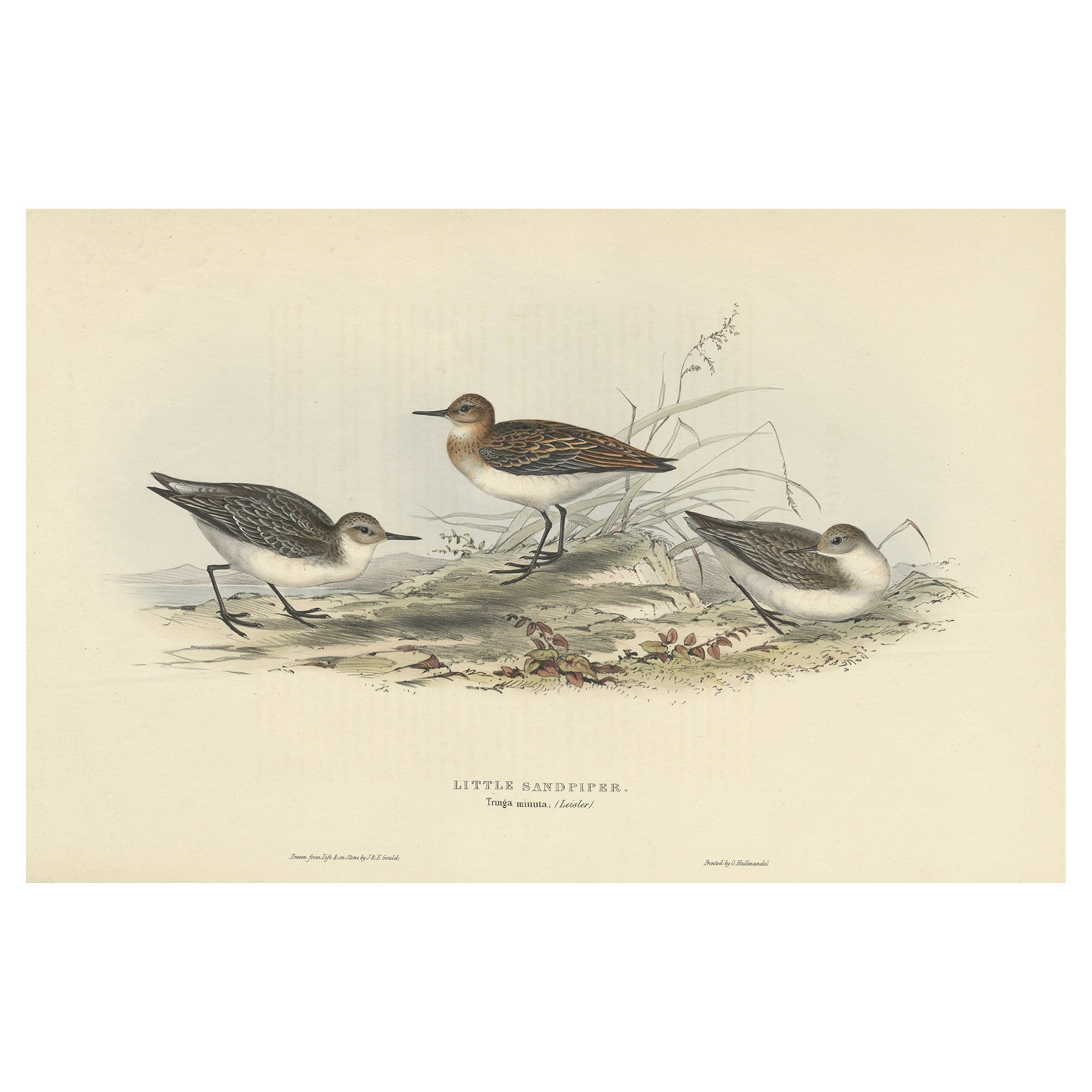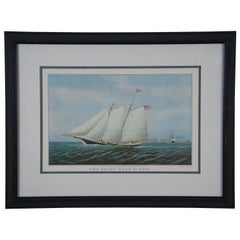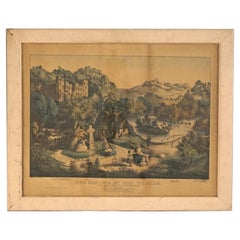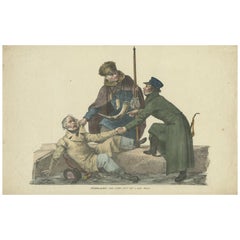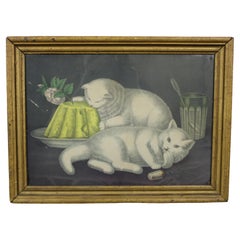
1880s Antique Currier & Ives My Little White Kitties Kittens Taking the Cake
View Similar Items
Want more images or videos?
Request additional images or videos from the seller
1 of 11
1880s Antique Currier & Ives My Little White Kitties Kittens Taking the Cake
About the Item
- Creator:Currier & Ives (Manufacturer)
- Dimensions:Height: 11.75 in (29.85 cm)Width: 15.75 in (40.01 cm)Depth: 1 in (2.54 cm)
- Style:Victorian (Of the Period)
- Materials and Techniques:
- Period:
- Date of Manufacture:1880s
- Condition:Wear consistent with age and use. Good Overall - Couple of tears to print; wear to frame.
- Seller Location:Dayton, OH
- Reference Number:Seller: 329201stDibs: LU5343227040382
Currier & Ives
Currier and Ives was a prominent American printmaking establishment headquartered in New York operating from 1835 to 1907. Nathaniel Currier (1813-1888) started his business on his own, but later merged with James Merritt Ives (1824-1895), becoming "Currier and Ives" in 1857. They produced and sold hand-colored lithographs which could be produced relatively quickly and cheaply. They called themselves "the Grand Central Depot for Cheap and Popular Prints". The company published around 7,500 lithographs in its 72 years in business.
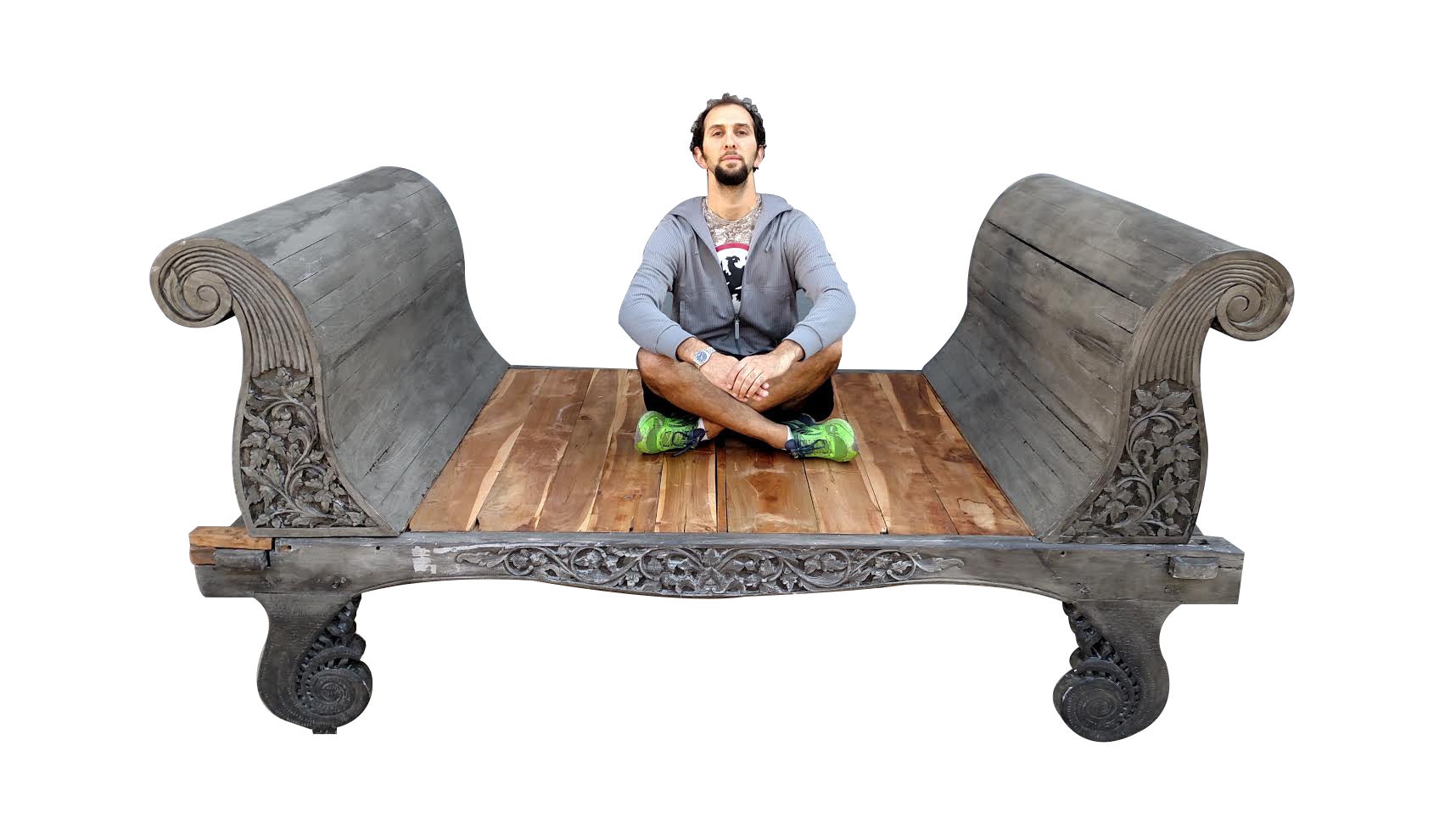
About the Seller
4.9
Platinum Seller
These expertly vetted sellers are 1stDibs' most experienced sellers and are rated highest by our customers.
Established in 2010
1stDibs seller since 2020
1,121 sales on 1stDibs
More From This SellerView All
- Currier & Ives C. Parsons The Yacht Haze 87 Tons Nautical Maritime Print 21"By Currier & IvesLocated in Dayton, OHVintage framed print of “The Yacht ‘Haze’ 87 Tons,” originally by C. Parsons, reprinted from the lithograph by Currier and Ives. Built By George Steers New York, 1861. Professional...Category
20th Century Prints
MaterialsHardwood, Paper
- Currier & Ives American Whaler Nautical Maritime Fishing Ship Print 21"By Currier & IvesLocated in Dayton, OHVintage framed print of “American Whaler,” reprinted from an 1850s lithograph by Nathaniel Currier, showing an American sailing ship / galleon hunting a whale. Professionally framed...Category
Early 20th Century American Prints
MaterialsHardwood, Paper
- 1830 Antique German Pennsylvania Dutch Birth & Baptismal Lithograph CertificateLocated in Dayton, OHAntique German / “Pennsylvania Dutch” Birth and Baptismal Certificate lithograph with color block printing in red and yellow, printed in 1830 and signed in 1831. Measures: 14” x 1...Category
Antique 1830s Folk Art Prints
MaterialsPaper
- 2 Antique Framed Silhouette Lithograph Prints Brown Kellogg Forsyth MacombLocated in Dayton, OH"Two antique lithograph silhouettes of John Forsyth and Alexander Macomb taken from life by William Henry Brown and produced by E.B. & E.C. Kellogg. William Henry Brown and his wife, Emmaline, left Philadelphia around 1859 and settled in a small railraod community of Saxton near Altoona, PA. He had gone there to work on the railroad, since photography had put him out of work. By 1865 he had moved to Erie, PA and was married to Margaret Horrell. They had two sons. She died shortly thereafter and he moved to Wilcox near Kane, PA. Later he lived with a niece in Georgia then married a third time to Sarah Conrad. After her death he returned to South Carolina. Connecticut Historical Society still has the 6 foot silhouette of the ""Dewitt Clinton"" locomotive he had done in 1831. They also have 14 prints he gave them in 1853 of silhouettes that are not part of the Portrait Gallery. A traveling artist, William Brown was a portrait painter and silhouettist, whose subjects were distinguished persons, especially in Philadelphia, New England, and Charleston. Brown was especially noted for a series titled ""Portrait Gallery of Distinguished Americans"", published in 1846 as a book of lithographs from his full-length silhouettes. Also included were biographies of the subjects. He was born in Charleston but spent more time in Philadelphia than in the South. He trained as an engineer but in the early 1830s, devoted himself increasingly to art. He first worked in New England and then went South, spending much time in Charleston in the 1840s and early 1850. In 1842, he was in Natchez, and he was also in St. Louis and New Orleans. However, by the late 1850s demand for his work had lessened, and he returned to being an engineer, first in Philadelphia and then in Charleston where he died in 1883. John Forsyth Sr. (October 22, 1780 – October 21, 1841) was a 19th-century American politician from Georgia. He represented the state in both the House of Representatives and the Senate, and also served as the 33rd Governor of Georgia. As a supporter of the policies of President Andrew Jackson, Forsyth was appointed secretary of state by Jackson in 1834, and continued in that role until 1841 during the presidency of Martin Van Buren...Category
Antique Late 19th Century American Classical Prints
MaterialsPaper
- Antique John Gould Ornithological Myiabeillia Hummingbird Lithograph PrintBy John GouldLocated in Dayton, OH"Antique mid to late 19th century colored lithograph print of Myiabeillia typica (Abeille's Hummingbird) drawn by John Gould, lithographed by H.C. Richter, printed by Hullmandel & Walton. From A Monograph of the Trochilidae, or Family of Hummingbirds, published in London circa 1849-61 (supplement printed 1880-87). “John Gould was a prolific illustrator of ornithology and was noted for the beauty of his illustrations. During his lifetime he was responsible for the illustration of over 2,200 different species of birds from around the world. The work for which he is best known is his Monograph of the Trochilidae or the ""Family of Hummingbirds"", which was produced between 1849-1861. Each hand-colored lithograph, many of which are highlighted with shimmering iridescence, presents the tiny jewel-like birds visiting lush flowers and foliage.” “Henry Constantine Richter (7 June 1821 – 16 March 1902) was an English zoological illustrator who produced a very large number of skillful coloured lithographs of birds and mammals, mainly for the scientific books of the renowned English 19th century ornithologist John Gould. Many of the original drawings used by Richter as the basis for his coloured lithographs were by Gould's wife, Elizabeth Coxen, produced before her death in 1841.[1][2] Richter's reputation was overshadowed by that of his much-celebrated employer. Since it was not customary to acknowledge illustrators alongside authors in the titles of publications, his name was forgotten. But in 1978, his great ability and the extent of his contribution to Gould's work came to light, in the work of the researcher Christine E. Jackson.” “Hullmandel & Walton – Lithographic printers, in London. According to BBTI this partnership operated from 1818...Category
Antique 19th Century Unknown Prints
MaterialsWood, Paper
- Antique Architectural Press Cathedral Cityscape Etching After Frank BrangwynBy Frank BrangwynLocated in Dayton, OH"Antique cityscape print “From an Etching by Frank Brangwyn, R.A. A.D. 1922 by The architectural Press. “Frank Brangwyn was born in 1867 in Bruges, Belgium. His family moved back to London in 1875 where he attended school until 1879, when he left as much out of boredom as necessity. His father worked as an architect, muralist, and in other arts-related crafts. Frank helped around the studio and continued his own artistic education by copying drawings at what was to become the Victoria and Albert Museum. His abilities attracted the notice of more established artists and at the age of 15 he was working for William Morris getting rudimentary training and preparing designs for many aspects of Morris' Arts and Crafts output. In 1885, with nothing much more than youthful enthusiasm, he submitted a painting to the Royal Academy Summer Exhibition and was accepted - at the age of 17. Spurred by this success he rented a studio and began a period of productive poverty. With little money, his early work revolved around the sea where traditional subjects for British art were moored and made docile models. This is considered his """"""""grey"""""""" period and the limited palette may be due as much to limited funds as to artistic intent. His 1890 canvas, """"""""Funeral At Sea"""""""" is typical of this period and won a Gold Medal at the 1891 Paris Salon. The young artist was making waves. In 1888, he worked on a freighter for passage to the Near East of Istanbul and the Black Sea. Orientalism was a major force in European art at the time and Brangwyn was as seduced as many artists were with the colors and light of the Mediterranean and African coasts. These trips brought a new palette to his work and something new to British art. The Buccaneers, at right, is from 1892 and the difference between it and his """"""""grey"""""""" period is dramatic. Just as we have movie critics today, art critics proliferated during the 19th century. Walter Shaw Sparrow, in his excellent """"""""Frank Brangwyn and His Work"""""""", devotes several chapters to the reaction of these critics to Brangwyn's art. Opinions were as varied as the two styles shown here, but what is most interesting is the degree of attention being paid to the work of a self-taught 25-year old. Whatever their views of his work, he was not being taken lightly. Not surprisingly, the bright hues and intense light of his new style were not appreciated by the establishment. To put his work in historic perspective, this was a period of Impressionism, Art Nouveau, and the Munich and Vienna Secessions. In British art, Sargent, Whistler, Waterhouse and Draper were popular. Lord Leighton, Burne-Jones and Alma-Tadema were still active. Brangwyn was following none of these men and the critics were at a loss as to how to pigeonhole him. The continental critics in France, Munich and Vienna had no such trouble. He was seen as a most modern and successful artist from the beginning. For his part, Brangwyn followed his own muse and in doing so found himself at the vanguard of the art world. In 1892 he began working as the designer for the new art magazine, """"""""The Graphic"""""""". In 1895 he was asked to paint murals for the notorious gallery, L'Art Nouveau, in Paris. He won medals for his work in Munich and Paris. At the age of 30, while Britain puzzled over how to evaluate his work, the rest of the world viewed him as the definition of modern British art. He illustrated books: """"""""Don Quixote...Category
Vintage 1920s Prints
MaterialsPaper
You May Also Like
- Antique Currier & Ives Print - The Meeting Of The Waters 19th CBy Currier & IvesLocated in Big Flats, NYAntique Currier & Ives Print - The Meeting Of The Waters 19th C Measures - 25.5"h x 34.25"w x 1.5"d Catalogue Note: Ask about DISCOUNTED DELIVERY RATES available to most region...Category
Antique 19th Century Prints
MaterialsPaper
$360 Sale Price20% Off - Large Folio N. Currier Colored Lithograph "Camping Out Some of the Right Sort"By Currier & IvesLocated in San Francisco, CAA large folio hand colored lithograph by Nathaniel Currier (1813-1888) and James Merritt Ives (1824-1895) titled "Camping Out Some of the Right Sort" published by Currier and Ives, New York, 1856. A charming and evocative composition depicting a group of mid-19th century men...Category
Antique Mid-19th Century American Victorian Prints
MaterialsPaper
- Antique Print of a Watchman taking a Man by the Collar, circa 1850Located in Langweer, NLAntique print titled 'Nachtwächter wat woll'n Sie? Det is mein Mann'. Translated to English 'Watchman, what do you want? That is my Husband'. It shows a scene where a watchman taking...Category
Antique Mid-19th Century Prints
MaterialsPaper
- Antique Bird Print of the Kingfisher, Yellow-Wagtail, White Wagtail, circa 1880Located in Langweer, NLAntique bird print titled '1. King Fisher 2. Yellow-Wagtail 3. Pied-Wagtail'. Old bird print depicting the Kingfisher, Yellow-Wagtail, White wagtail. This print originates from: 'Ill...Category
Antique Late 19th Century Prints
MaterialsPaper
$131 Sale Price20% Off - Antique Print of Various Birds Including the Little BitternLocated in Langweer, NLOriginal antique print of various birds, including the little bittern. 1) Der Strandreuter. - 2) Der Wasserfäbler. - 3) Der kleine Rohrdommel. - 4) Die rosenfarbige Drossel. This pri...Category
Antique Early 19th Century Prints
MaterialsPaper
- Antique Print of various Owls including the Little OwlLocated in Langweer, NLOriginal antique print of various owls, including the little owl. This print originates from 'Bilderbuch fur Kinder' by F.J. Bertuch. Friedrich Johann Bertuch (1747-1822) was a Germa...Category
Antique Early 19th Century Prints
MaterialsPaper
Recently Viewed
View AllMore Ways To Browse
Domed Band
Used Corner Display Cabinet
Space Age Fashion
Antique Cabinet Grand
Pair Of Antique Wood Cabinets
Ultra Vintage
Designer Tapestry
Vintage Ultra
Tall Cabinet With Glass
Symmetry Vintage
Carved Wooden Panels
Jere Metal Wall Sculpture
Very Large Wall Sculptures
Wall Mounted Head
Vintage French Country Bedroom
Reeded Cabinet Doors
Set Of Display Cabinets
Art Deco Enamelled Metal
